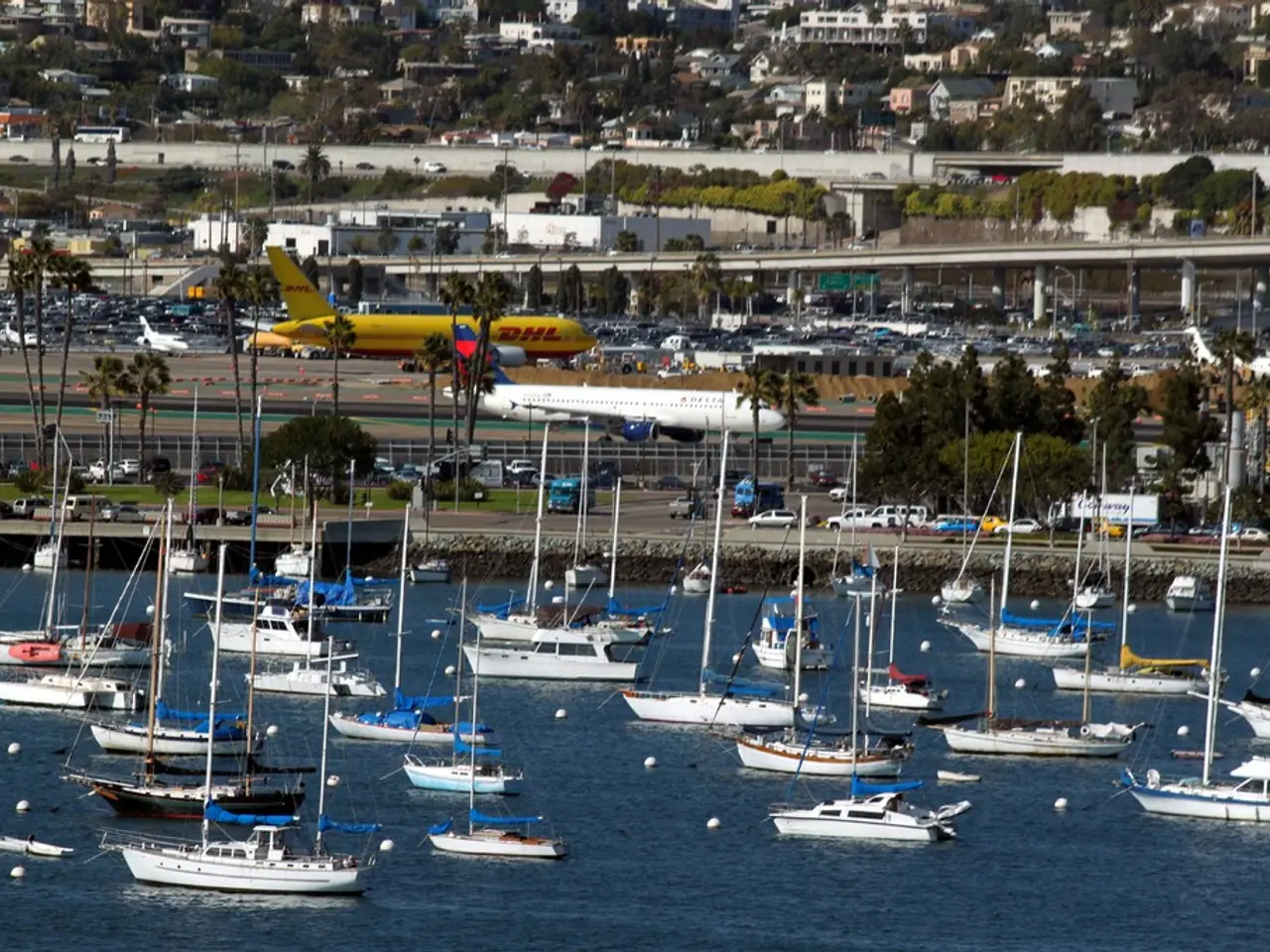Maritime industry buzzing with excitement over ferry construction plans
A groundbreaking ceremony was recently held at the Kisumu Shipyard, marking the beginning of a significant initiative that promises to transform Kenya's economic landscape and extend its influence beyond the country's borders. The first of many vessels to ply Kenya's inland waters is being constructed, with the ferry on Lake Victoria being the first of its kind.
Defence Cabinet Secretary Soipan Tuya, Hassan Joho, and Homa Bay Governor Gladys Wanga attended the ceremony, signifying the importance of the project. The collaboration with the Kenya Defence Forces ensures that every vessel launched meets the highest standards of safety, efficiency, and reliability.
Kenya, being a maritime nation with a host of experts in naval architects and seafarers, is urged to build its own water vessels. Ken Sudi, a retired seafarer, believes that Kenya Shipyard Ltd has the potential to build ships, boats, and all sorts of water vessels. The Former Seafarers Union of Kenya General Secretary, Steve Owaki, encourages Kenya Shipyard Ltd to roll out more shipbuilding ventures.
Maritime commentator and analyst Mwangura positions Kenya to become the regional hub for inland water transport. This corridor could revolutionise trade patterns across the continent by serving as natural highways connecting multiple nations. The initiative at the Kisumu Shipyard signals Kenya's determination to lead in innovative infrastructure development and strengthen regional cooperation across Africa's Great Lakes region.
Apart from Kenya Shipyard Ltd, there are other companies like African Marine and General Engineering Company Ltd (AMGECO) and Southern Engineering Company (Seco) with experience in ship repair and building. The development of Kenya’s inland waterways, particularly through projects like the Integrated Maritime and Inland Water Transport System (IMTS) and the LAPSSET Corridor Project, has significant potential to enhance regional trade and economic integration.
The LAPSSET Corridor Project, which includes a new deep-water port at Lamu and associated transport networks linking Kenya with South Sudan and Ethiopia, is expected to reduce transport costs substantially for landlocked neighbours. It could contribute between 2% to 3% of Kenya’s GDP initially and up to 8% to 10% when fully operational. This infrastructure will enhance cargo handling and logistics, boosting both exports and imports across the region.
The IMTS aims to modernize marine transportation within Kenyan territorial waters by integrating inland water transport with maritime and land transport. This system will improve cargo handling, passenger mobility, and overall trade logistics, facilitating smoother and faster movement of goods and people within the coastal and inland regions.
Inland waterway development is expected to generate thousands of jobs, particularly in coastal counties like Kwale, Lamu, Kilifi, and Mombasa. It also opens up new opportunities in maritime tourism, fisheries, aquaculture, and related blue economy sectors, fostering inclusive economic growth for coastal and inland communities.
By connecting Kenya’s ports with regional transport corridors, Kenya’s inland waterways will strengthen economic ties among East African countries. Improved transport infrastructure aligns with broader regional integration goals by facilitating smoother cross-border trade, enhancing supply chain reliability, and promoting shared economic development.
The new development demonstrates the transformative power of inland waterway development. Mr Owaki lauds the government's initiative in reaching out to partners from well-developed shipping and maritime nations. Mr Andrew Mwangura, a maritime commentator, stated that the ferry construction is a game-changer for the sector. The Great Lakes region, including Lake Victoria, Lake Tanganyika, Lake Malawi, Lake Albert, and Lake Turkana, forms a natural economic corridor.
In summary, Kenya’s inland waterway development plays a strategic role in boosting regional trade and economic integration by lowering transport costs, enhancing logistic networks, creating employment, and positioning Kenya as a regional transport and trade hub in East Africa.
- The construction of the ePaper on Lake Victoria by Kenya Shipyard Ltd, as part of the initiative at the Kisumu Shipyard, could propel Kenya to lead in education-and-self-development, technology, politics, sports, general-news, and health by showcasing its advancements in shipbuilding ventures.
- The ferry construction is a significant milestone in Kenya's objective to become the regional hub for inland water transport, potentially revolutionising education-and-self-development, technology, politics, sports, general-news, and health across the Great Lakes region.
- The transformation of Kenya's economic landscape, due to the development of its inland waterways, stretches beyond its borders, impacting education-and-self-development, technology, politics, sports, general-news, and health across the continent.




